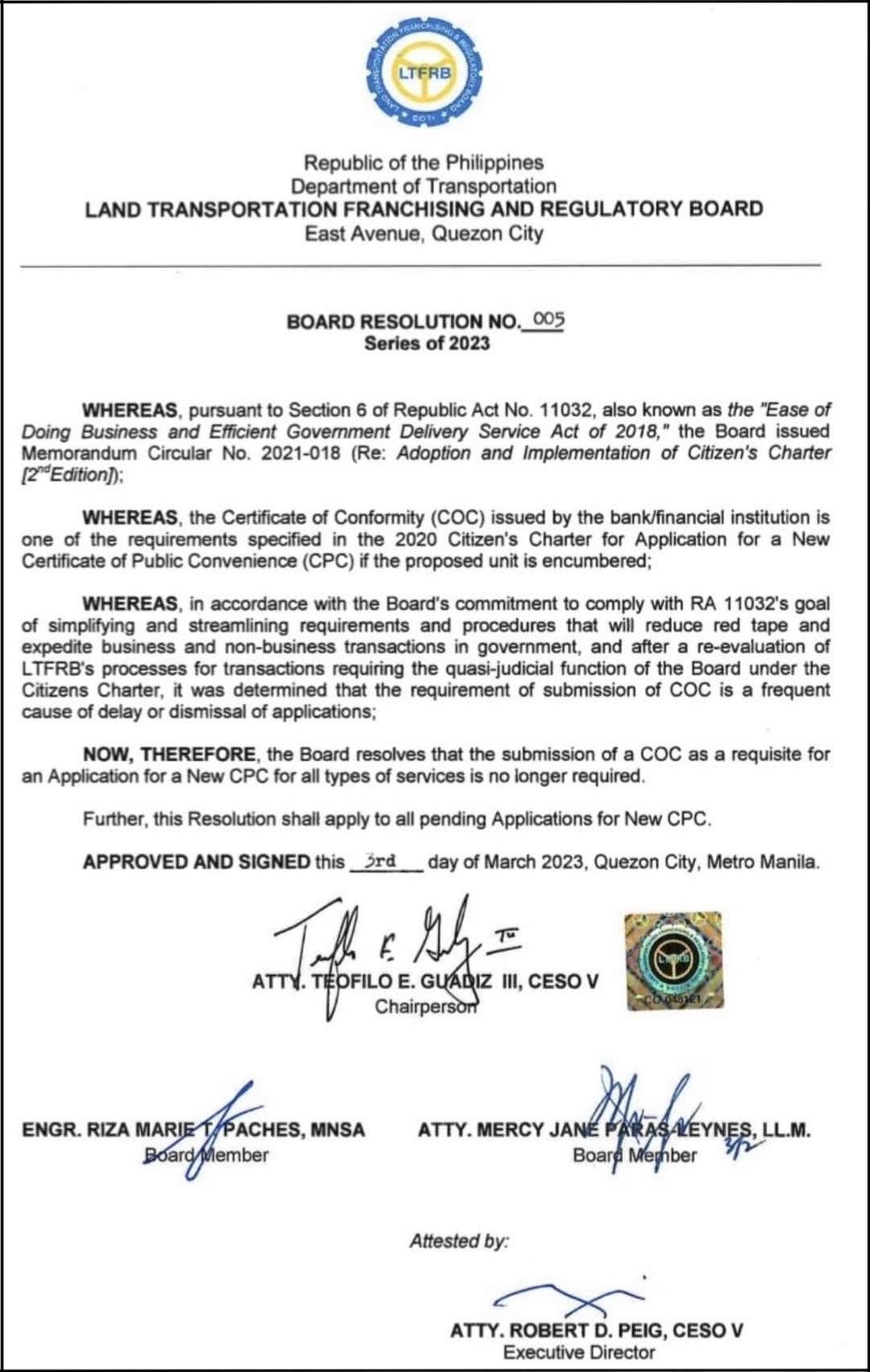
If you’re a Grab driver—or a driver who has been aspiring to join the Transport Network Vehicle Service industry—you know that one of the most challenging hurdles that must be cleared before you qualify for a Certificate of Public Convenience is the so-called Certificate of Conformity (COC).
Well, good news: The Land Transportation Franchising and Regulatory Board has axed this requirement. As in those who are applying to be Grab drivers—assuming their cars are financed by a bank—no longer need to acquire this document.
Keep this screenshot from the bearer of glad tidings:

The COC used to be the precious proof that the bank was giving its consent that a mortgaged car may be used as a TNVS vehicle. This was the biggest bane among Grab aspirants who were using financed cars.
In fact, the pre-pandemic volume of 65,000 TNVS drivers drastically nosedived to 20,000 during the pandemic. This was mainly due to two things: (1) TNVS drivers couldn’t pay for their financed cars (hence repossessed) as public transportation was suspended, and (2) many banks refused to issue COCs to TNVS applicants for fear that the latter wouldn’t be able to keep their financial obligations. It became a ridiculous cycle.
The removal of the COC is well and good. However, a better scenario would be one where TNVS vehicles are not necessarily required to be brand-new. That is the goal of GrabShare, I believe. An ideal TNVS industry is one that doesn’t introduce new cars to our already-clogged roads, but one that makes use of existing rides that would otherwise be dormant if they could not pass the many requirements of LTFRB.
I look forward to the time when LTFRB and TNVS companies help each other in serving the commuting public. That time is coming—hopefully.


0 Comments